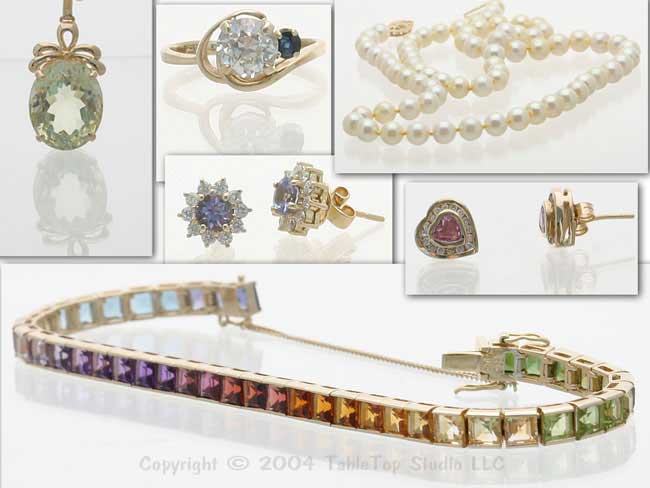Thursday, February 15, 2007
Folding an EZcube light tent video now on YouTube
Tuesday, February 13, 2007
Do you need both a small EZcube and a large EZcube light tent?
Judy M recently wrote. Most of the pottery items I plan to photograph will be from 8” to 12" in diameter or height. I ordered the 30" EZcube kit because I make a few items in the 16 - 24" height/diameter range. I assume the 30" EZcube would work just as well for the smaller items as for the larger items? (I know a 12" cube comes with the kit, but for things that are less than 12” will I need to use the smaller EZcube? Will the 30’’EZcube work just as well for smaller items as for the larger items?
8-12’’ subjects will work fine in a 30’’ EZcube. For really small items like thimbles, rings, glass animals, beads, etc., I recommend using the 12’’ EZcube though. (That’s one reason why we include both sizes in the kit.) The 12” EZcube is easier to work with, and takes up a lot less space. The smaller EZcube will also give you a bit more control over highlights when shooting small shiny subjects.
So the bottom line is that if you are trying to decide between a larger or a smaller EZcube light tent. You can always put a smaller item in a large tent, but you can’t fit a large item in a light tent that’s too small.
Friday, February 09, 2007
What's best white acrylic or clear acrylic?

Warren recently asked: "Is white acrylic preferable over clear acrylic for use as a jewelry background?"
My response : You can create a beautiful, yet subtle, reflection of a subject in your product photos by laying the subject - be it jewelry, metal parts, perfume bottles or whatever - on a piece of reflective acrylic or Plexiglas. [Plexiglas is a brand of acrylic].
The reflective effect can be acheived by using clear acrylic or glass. However, a clear reflective surface may cause a double reflection since the subject will reflect off both the top and the bottom surfaces. Using white acrylic rather than clear acrylic or glass, avoids the double reflection, because the camera will only pick up the reflection from the top surface.
By the way, we call this the "Tiffany Effect" because it is an effect you will often see on the Tiffany web store and in Tiffany ads. (For examples look here and here.) The effect can also be created in Photoshop, but we find it's easier to do it photographically. And if you are wondering how to suspend ear rings, pendants, or any subjects, like it was done in these shots, then take a look here.